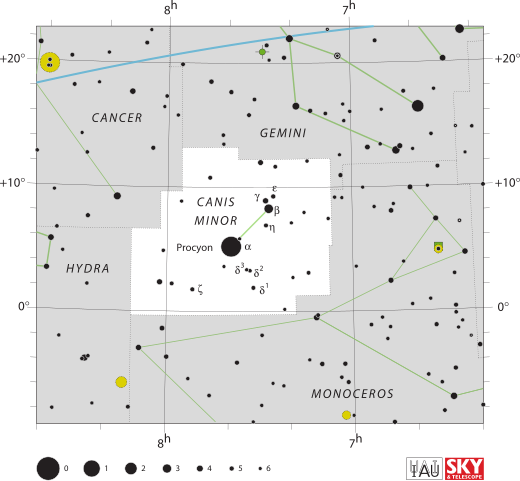- Canis Minor /ˌkeɪnɪs ˈmaɪnər/ is a small constellation in the northern celestial hemisphere. In the second century, it was included as an asterism, or pattern, of two stars in Ptolemy’s 48 constellations, and it is counted among the 88 modern constellations. Its name is Latin for “lesser dog”, in contrast to Canis Major, the “greater dog”; both figures are commonly represented as following the constellation of Orion the hunter.
